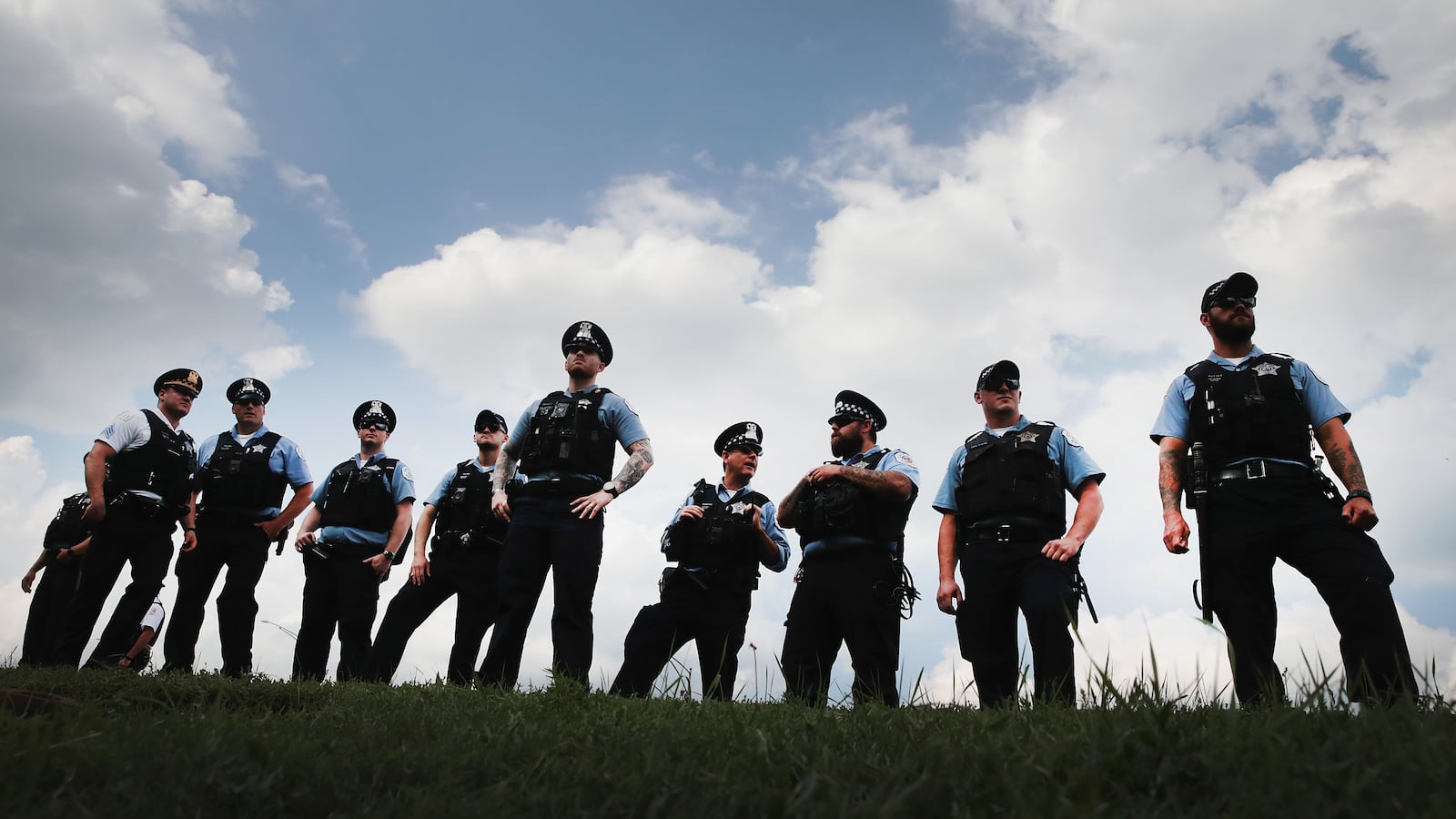As a school resource officer for the past 12 years, Kip Heinle has been in all kinds of situations, from mental health emergencies to active shooter drills. Now he’ll be using the skills he’s learned patrolling the halls of Triad High School in Troy, a town on the west side of the state, to help Illinois develop its first statewide training standards for police officers who serve in schools.
“I’ve always been for training, there is no doubt about it,” said Heinle, who was a police officer in Madison County before working at a high school. Dealing with teenagers, he said, means you handle one crisis after another.
He’s one member of a committee creating a training for school resource officers, as police in schools are called, that was mandated by a bill drafted by police reform advocates and signed into law by former governor Bruce Rauner last August. The law requires school resource officers in Illinois to take at least 40 hours of training every four years that includes crisis intervention training and trauma-informed care for youth.
The new law makes Illinois one of 28 states, along with the District of Columbia, that have a law defining the role of police officers in schools and mandating training for them.
That’s according to a school safety report compiled by the Education Commission of the States, a national education policy research group, which compares whether states have a school safety plan, conduct school safety audits or allow police and security guards to bring weapons into schools.
Illinois is in line with the majority of states on most metrics. It is one of 43 states that requires schools to have a safety plan. But 31 states, including Illinois, don’t require that a law enforcement agency be involved in making that plan. Illinois also mandates an annual review of a school’s safety plan.
It’s also one of at least 30 other states where law enforcement and security officers are allowed to carry weapons into schools. Nineteen states, including neighboring states Michigan and Wisconsin, don’t explicitly allow staff to have firearms inside schools.
The aim of the report is to educate state legislators considering school safety about what legislation is already out there, says Jennifer Thomsen, a researcher with the commission. “It’s pretty rare [for legislators] to come to the table with a piece of legislation that is completely pulled out of the air,” she said. “We’re trying to provide a landscape so they can see the wide variety of ways these issues are being addressed.”
The report looks primarily at state statutes. School districts also can make their own rules about police in schools or weapons allowances inside buildings. The Champaign County Unit School District, in central Illinois, has a memorandum of understanding with its police department and local city council that provides a framework for its school resource officer program.
Chicago has a troubled school police program. Officers who serve in schools receive no training, have little day-to-day oversight from either the police department or the school district, and in some cases have remained on duty even after multiple allegations of misconduct. Last fall, Chicago’s inspector general released a report on Chicago’s police in schools and noted “extreme concerns.”
But that could be changing. The inspector general recommended the police department and the school district create a memorandum of understanding about the roles and responsibilities of school-based police. It is being drafted.
Both candidates for mayor in Chicago’s run-off election have criminal justice reform backgrounds. Toni Preckwinkle, the current Cook County Board president, said that she questions whether police should be in schools, but if they are, said they should be specially trained and barred from meting out school discipline. Lori Lightfoot, a former federal prosecutor, chaired a task force that in 2016 recommended reforms to restore trust between police and the community.

